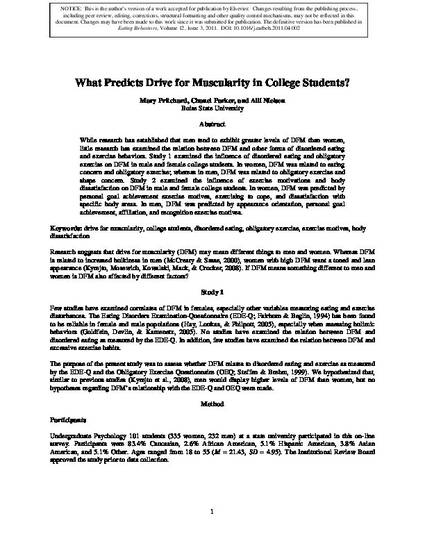
While research has established that men tend to exhibit greater levels of DFM than women, little research has examined the relation between DFM and other forms of disordered eating and exercise behaviors. Study 1 examined the influence of disordered eating and obligatory exercise on DFM in male and female college students. In women, DFM was related to eating concern and obligatory exercise; whereas in men, DFM was related to obligatory exercise and shape concern. Study 2 examined the influence of exercise motivations and body dissatisfaction on DFM in male and female college students. In women, DFM was predicted by personal goal achievement exercise motives, exercising to cope, and dissatisfaction with specific body areas. In men, DFM was predicted by appearance orientation, personal goal achievement, affiliation, and recognition exercise motives.
This is an author-produced, peer-reviewed version of this article. © 2009, Elsevier. Licensed under the Creative Commons Attribution-NonCommercial-NoDerivatives 4.0 International License (https://creativecommons.org/licenses/by-nc-nd/4.0/). The final, definitive version of this document can be found online at Eating Behaviors, doi: 10.1016/j.eatbeh.2011.04.002
Available at: http://works.bepress.com/mary_pritchard/35/
